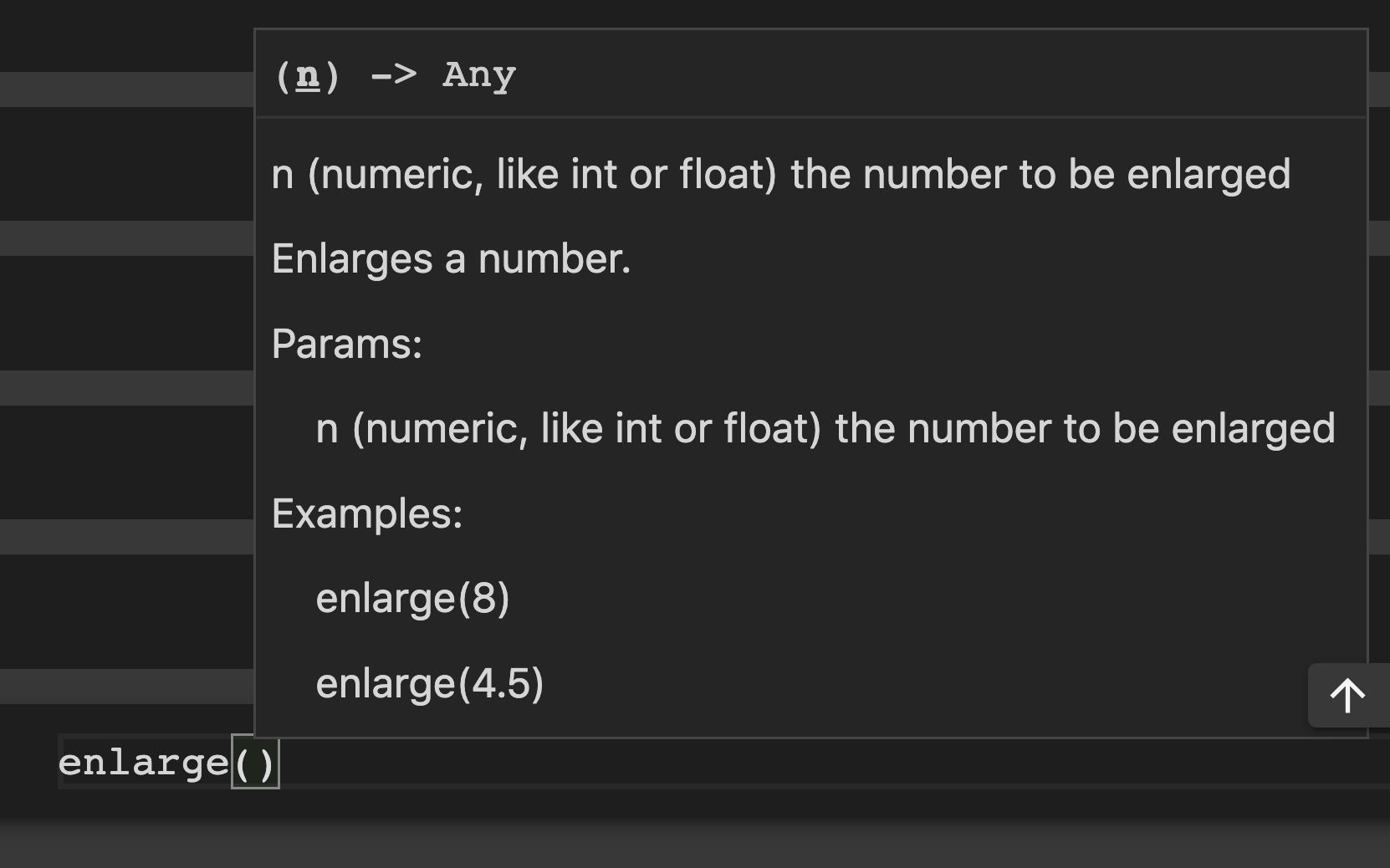# FUNCTION DEFINITION:
def enlarge(n:float) -> float: # OBSERVE THE TYPE HINTS
return n * 100.0
# FUNCTION INVOCATIONS:
print(enlarge(9))
print(enlarge(3))
x = 10
print(enlarge(x))900.0
300.0
1000.0Docstrings allow Python developers to document their code in a way which can be interpreted by other computers and humans alike.
“The docstring for a function or method should summarize its behavior and document its arguments, return value(s), side effects, exceptions raised, and restrictions on when it can be called (all if applicable). Optional arguments should be indicated. It should be documented whether keyword arguments are part of the interface.” - PEP 257
Before documentation:
Complete, with documentation:
The multiline string can look intimidating, but docstrings have practical benefits. Python tools and text editors will recognize the docstring and show a helper message to anyone who is trying to use / invoke that function:

Another way of documenting your functions more formally is a type hint.
Type hints allow us to specify:
:) to the right of each parameter name->) to the right of the function definition900.0
300.0
1000.0Ultimately these type hints are just suggestions, and they won’t prevent someone from passing parameters of different datatypes.